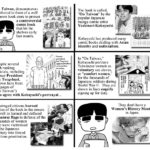By MARTIN CRUTSINGER
AP Economics Writer
WASHINGTON (AP) _ The U.S. economy’s bounce-back last quarter from a dismal winter was even faster than previously thought, a sign that growth will likely remain solid for rest of the year.
The economy as measured by gross domestic product grew at a 4.6 percent annual rate in the April-June quarter, the Commerce Department said Friday. It was the fastest pace in more than two years and higher than the government’s previous estimate of 4.2 percent.
The upward revision reflected stronger-than-expected business investment and exports last quarter.
The healthy second-quarter growth marked a sharp rebound from the January-March quarter, when the economy shrank at a 2.1 percent rate in the midst of a brutal winter that idled factories and kept consumers at home.
Wall Street cheered the upbeat economic report, which helped spur the Dow Jones industrial average to a 1 percent gain.
As the third quarter nears an end, economists envision a strengthening economy through the end of 2014 and into 2015. Many think the economy is growing in the current July-September quarter at a rate of around 3 percent.
Sal Guatieri, senior economist at BMO Capital Markets, is slightly more optimistic than most. He said a brighter outlook for business investment spending and other good economic reports had led him to revise his GDP forecast to 3.2 percent growth for the July-September period, up from 2.8 percent earlier.
“The American economy is firing on virtually all cylinders and cruising at a decidedly stronger rate than in recent years,” Guatieri said.
Friday’s report on GDP _ the economy’s total output of goods and services _ was the government’s third and final estimate for the second quarter.
The final upward revision was driven by new-found strength in business investment, which grew at an annual rate of 9.7 percent last quarter thanks to higher spending on structures and equipment. The government’s previous such estimate had been 8.1 percent
Exports also helped boost the economy. The data showed that exports grew at an 11.1 percent rate in the second quarter, stronger than 10.1 percent in its earlier estimate.
Consumer spending, which accounts for more than two-thirds of economic activity, grew at a 2.5 percent annual rate. That figure was unchanged from the previous estimate. But it represents twice the 1.2 percent growth in consumer spending in the first quarter.
The surge of activity this spring was in part a turnaround from the harsh winter, which disrupted factory production and kept consumers away from stores.
Because of the rough start to the year, growth for 2014 overall is expected to be a temperate 2.1 percent, little changed from last year’s 2.2 percent increase.
Analysts have sketched a much brighter outlook for 2015. They say that the economy is entering a period of above-trend growth as unemployment falls. More job growth should translate into stronger consumer spending.
Economists at JPMorgan Chase predict growth of 3 percent next year. That would be a significant improvement on the economy’s average annual growth of around 2 percent since the end of the recession in June 2009.
Federal Reserve policymakers last week decided to keep a key short-term interest rate at record lows, near zero, and indicated that they planned to keep it there for a “considerable time.”
Analysts regarded the Fed’s comments as support for their view that the Fed won’t start raising rates until the mid-2015. The low rates should help bolster higher spending by consumers and businesses, which in turn would boost growth and drive down theunemployment rate, now at 6.1 percent.










